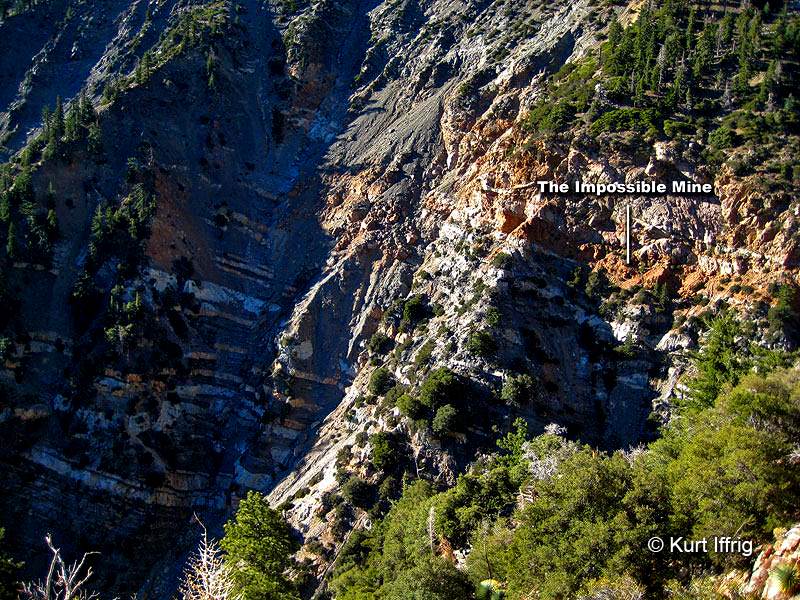Searching For Artifacts Below The Big Horn
Posted: Tue Nov 05, 2019 8:35 am
On July 4th I finally got up the nerve to explore the canyon beneath Big Horn Mine. It's hella-steep, so I figured
it would be easier to come from the bottom up. That's a long walk, starting in Vincent Gulch, going all the way to
the end of Mine Gulch and then cutting up a massive rock wash, looking for the entrance to the right canyon. I was
searching for a mine (that I never found) but there were artifacts galore from up above.
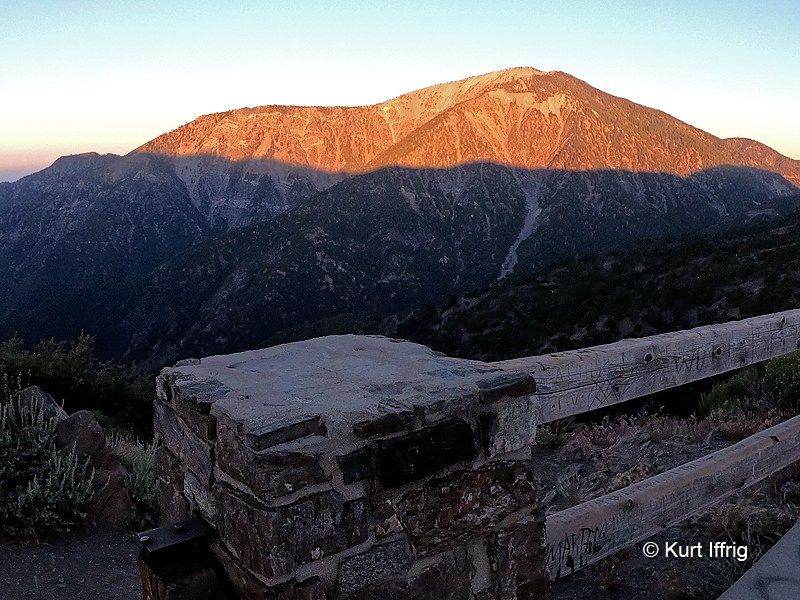
An early morning view of Baden Powell from Inspiration Point. This used to be known as North Baldy.
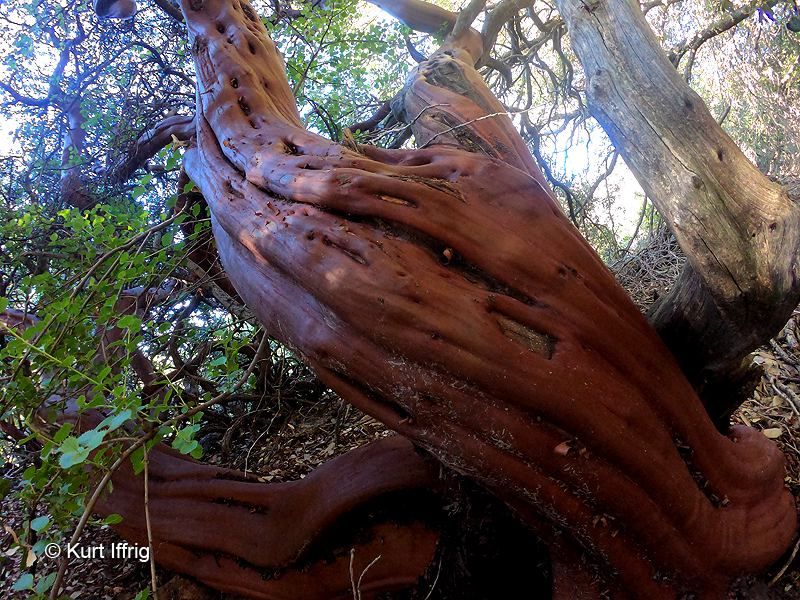
Beautiful manzanita on the way down. People used to make furniture out of this, but now it's protected.
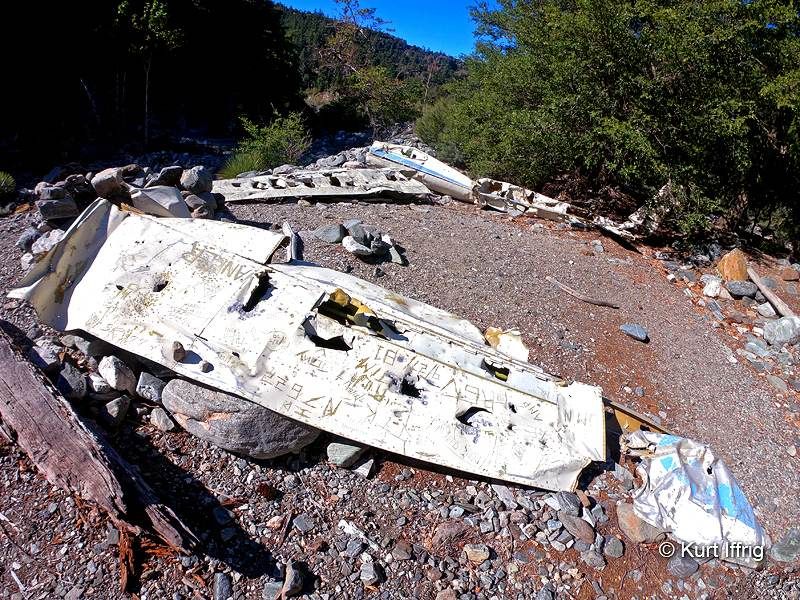
Along the way I passed this old plane wreck. This was a glider that crash landed in 1974. Both passengers survived.
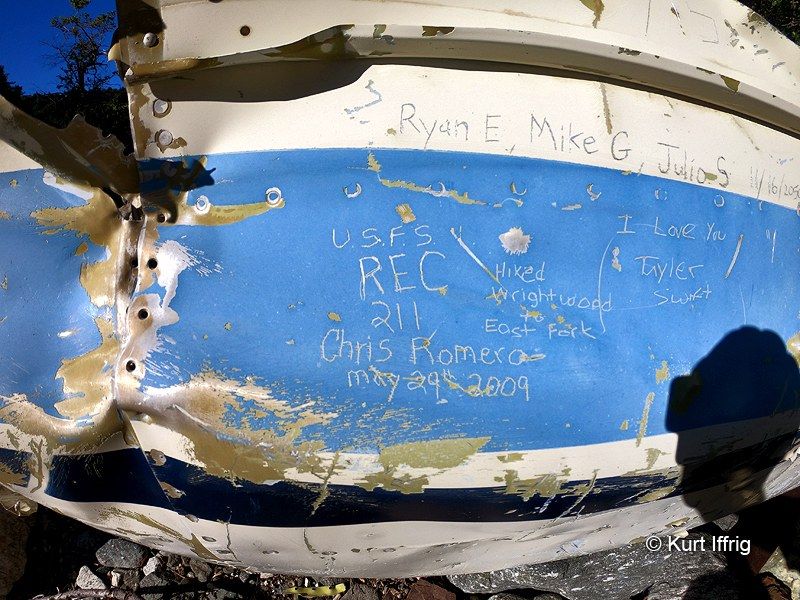
Idiots have scratched their names all over the plane, including a dumbass from the Forest Service, who should be fired.
On the way back out happened to meet up with Anthony and his girlfriend in Mine Gulch and showed them the wreck.
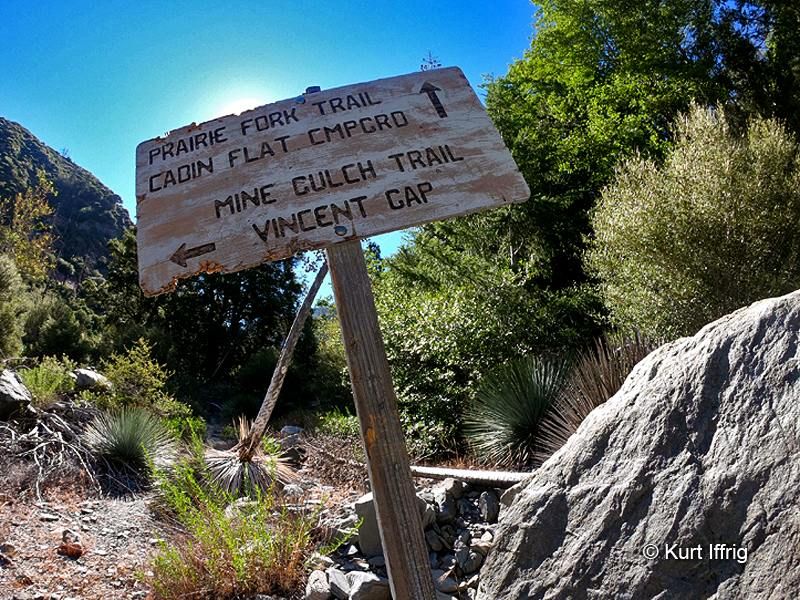
Here's the cutoff for Prairie Fork, but I was going in the opposite direction on this day. Originally Prairie Fork
was supposed to be turned into a dam, but fortunately the San Gabriel Mining company fought the water
company and won. George Trogden was an agent who worked for the water company and lived near Iron Fork.
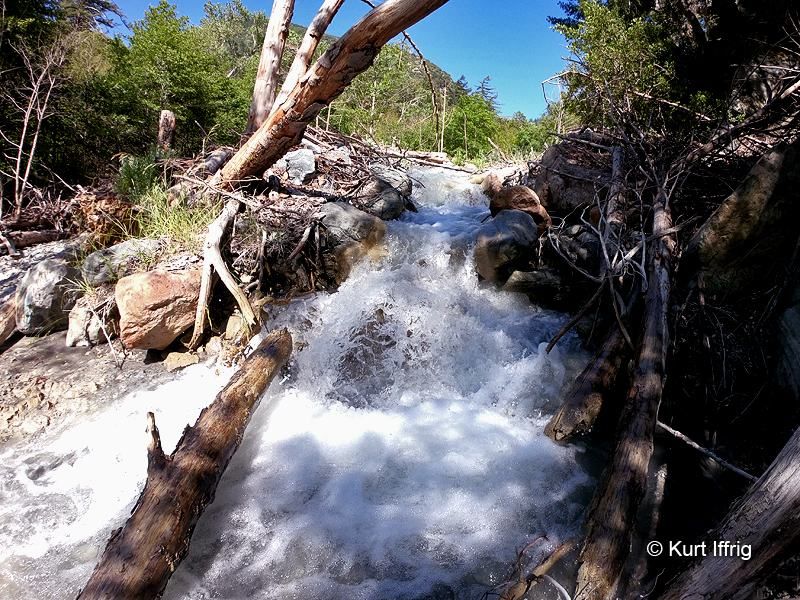
It was midsummer and hot, but there was still a good flow of water in some areas.

Cutting up the big rock wash. Way back there you can see Mt. Baden Powell.
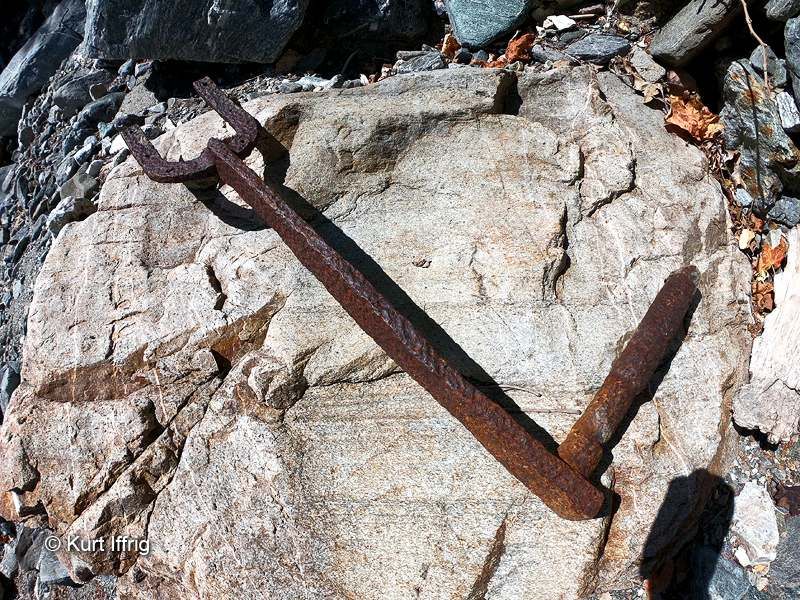
After locating the mouth of the canyon I dug this artifact out of some brush. Not sure what it was.
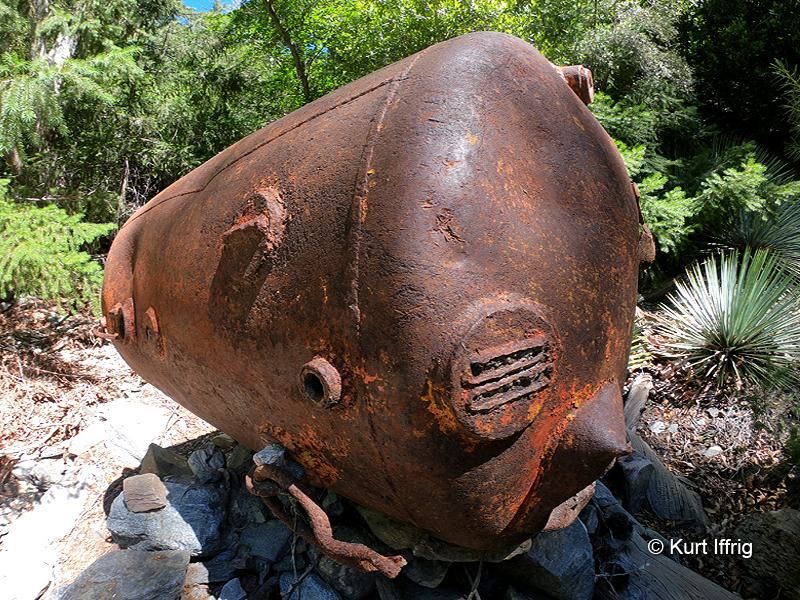
This was my most massive find. Looks like an old boiler that got suspended above some rocks on the way down.

Near the boiler I found remnants of an old wood cabin perched on a plateau. The boards were all over the place.
I believe that there may be a mine in the side gully here, but I didn't have time to look for it on that day.
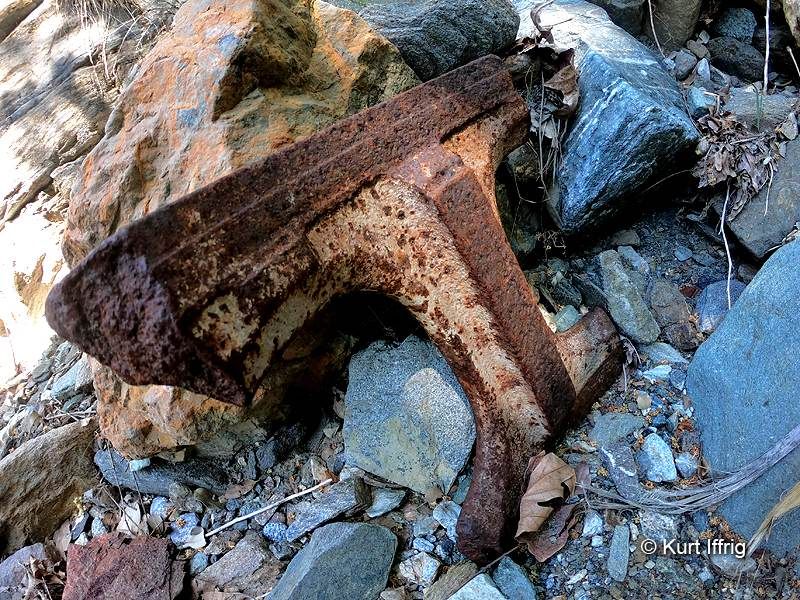
Not sure what this was. It may be a part broken off the base of the Big Horn's original two stamp mill.
I found one of the stamp heads further up the canyon. The mine eventually upgraded to a ten stamp mill
and were thinking of adding a 60 stamp mill to that, but the company was mismanaged and that plan
fell through.
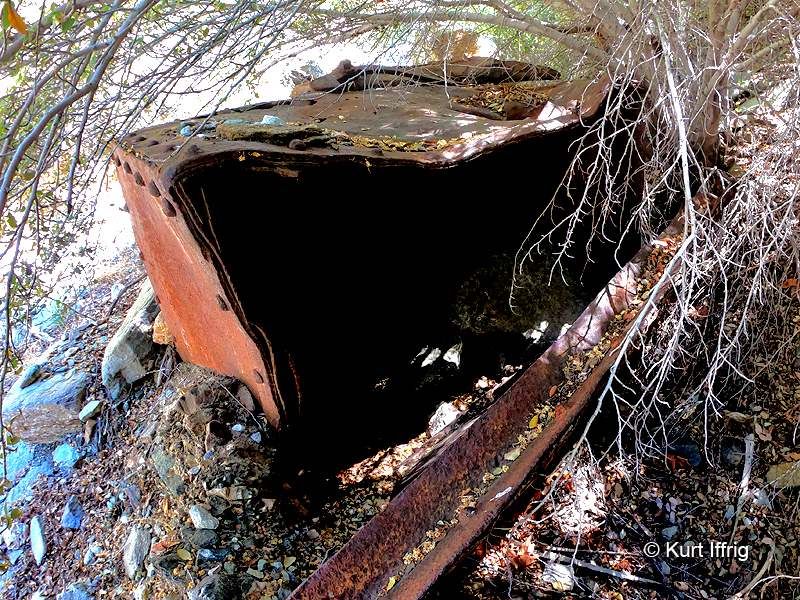
Now we get to the nitty gritty and start finding the ore carts. Apparently the mining company just shoved
these over the edge after mining operations ceased.
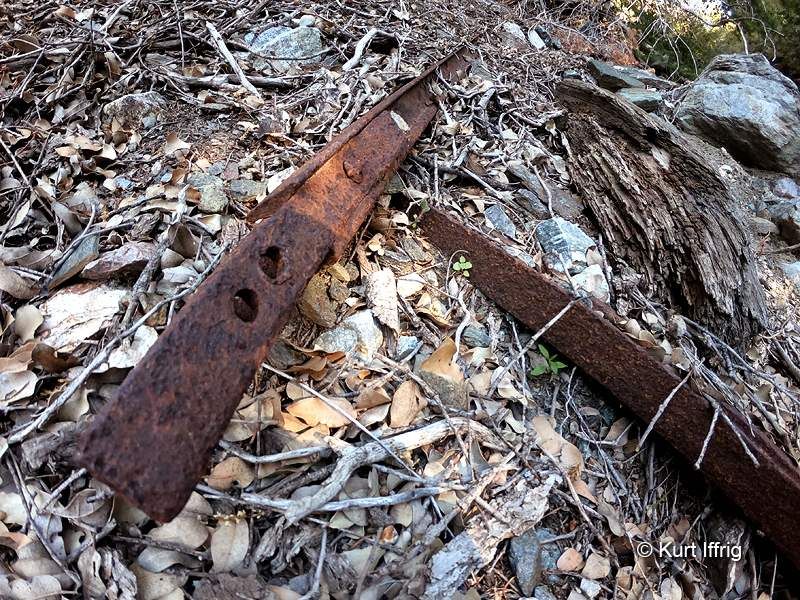
And of course there were rails everywhere. I'm amazed that they didn't salvage these for money.
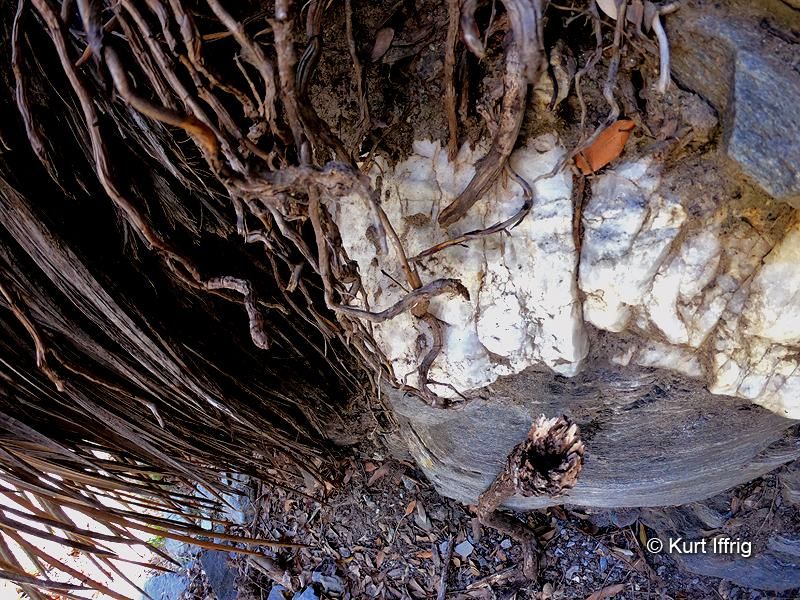
A nice pure vein of quartz. The entire vein was about 2 feet high by ten feet long and went straight into the hillside.
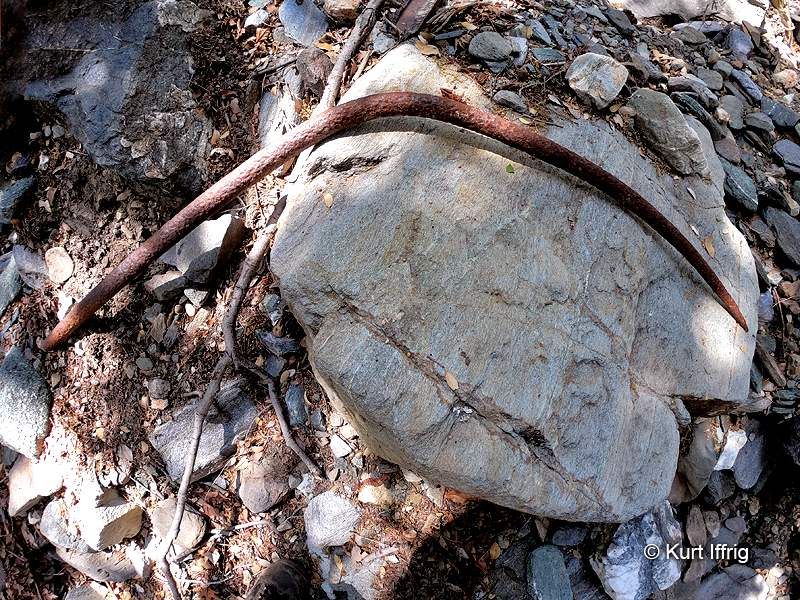
Not sure what this was. Paul Bunyan's toothpick maybe.

Chassis of a second ore cart. These were made in two pieces, and you can see the eight holes where the
chassis was bolted to the box.
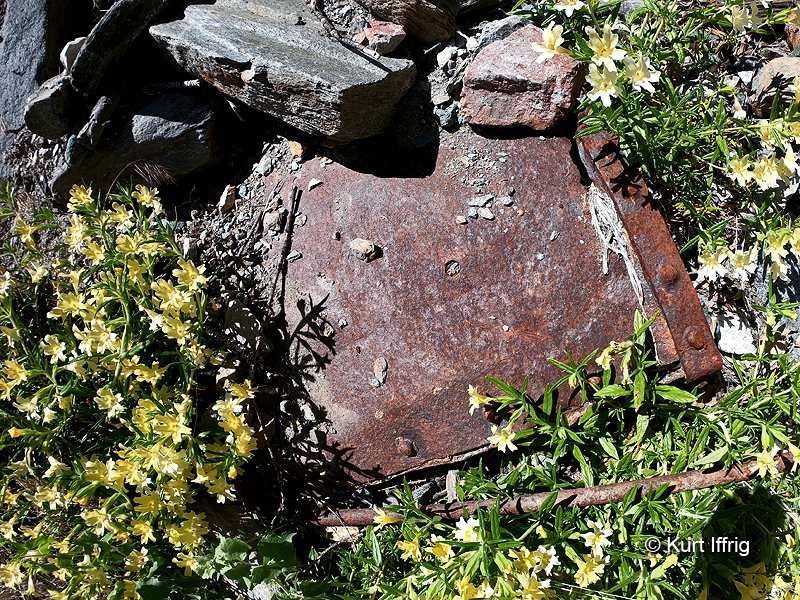
Box portion of a third ore cart. On this one you can see the release lever near the bottom of the photo.
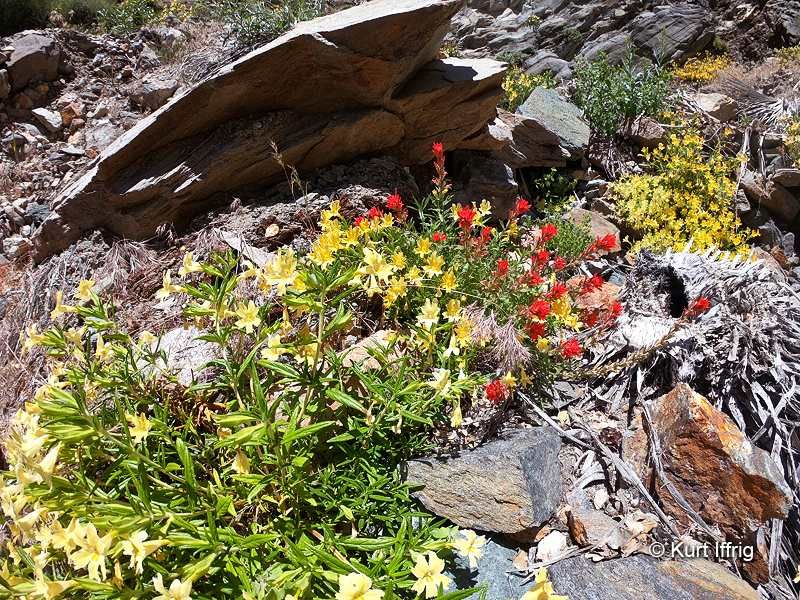
There was no water in this canyon, but a lot of wildflowers. Here you see some Sticky Monkeyflower and Indian Paintbrush.
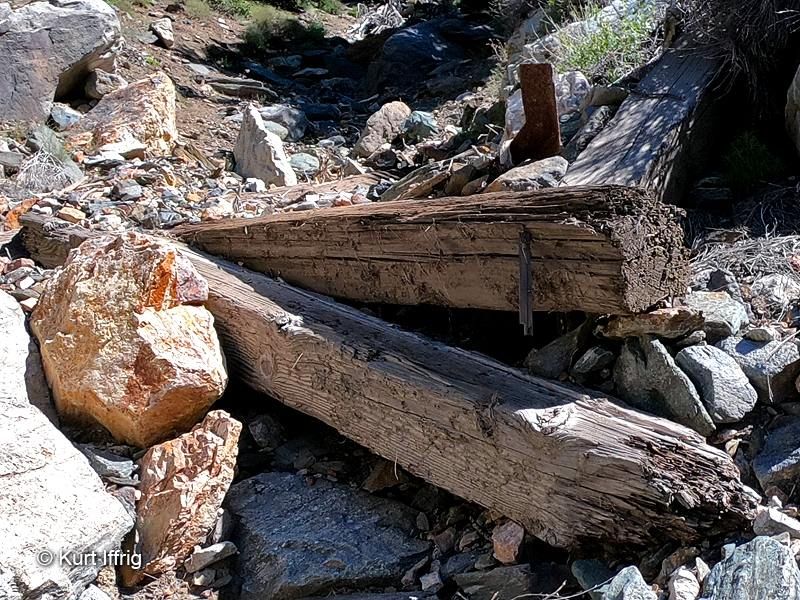
Heavy timbers galore down in this canyon. Some were as long as 20 feet.
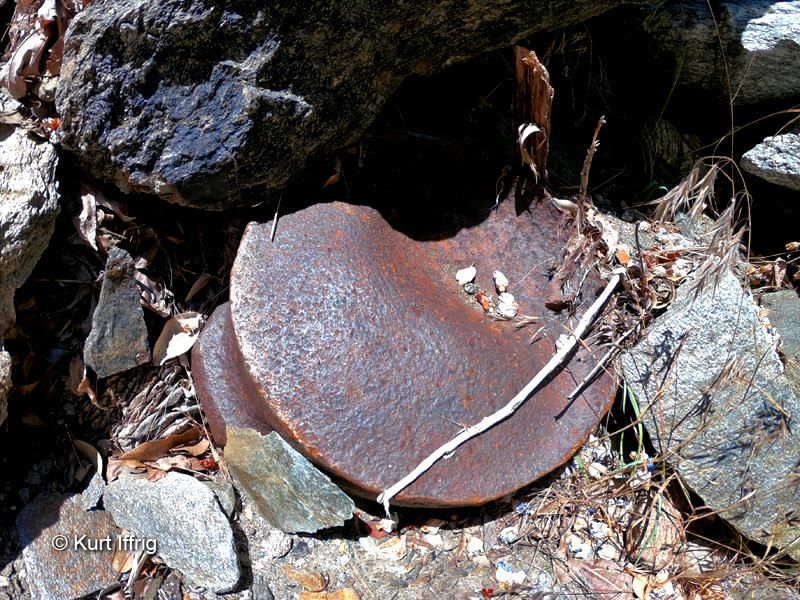
This was my big find of the day. It's one of the original stamp heads from the mill. This weighs about 900
pounds, and if it came from the second mill built there would have been 10 of these. You can see how the
concave side has been worn down by use.
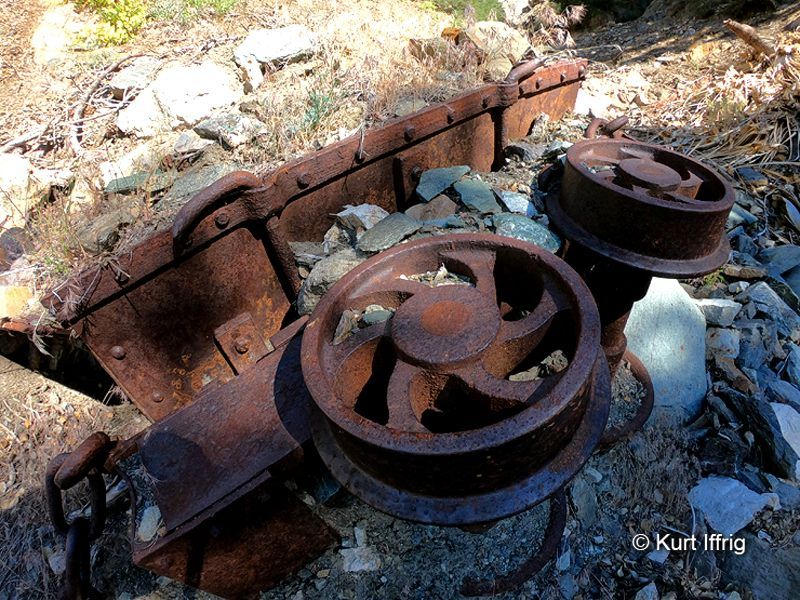
Another cart. This one has a complete chassis but the box has been ripped off. A beautiful piece.
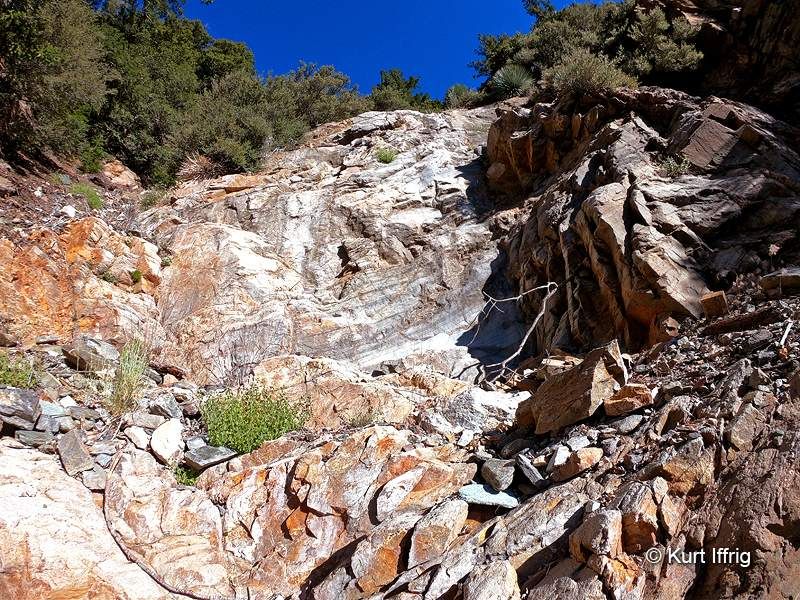
When I got to this point I wasn't sure where to go. I climbed up the left side, but then something terrible happened.
The Ridgecrest earthquake struck, and rocks started falling all over the place. That was enough for me, I abandoned ship
and headed back down the canyon. I was almost out of water anyways, so it was time to go.
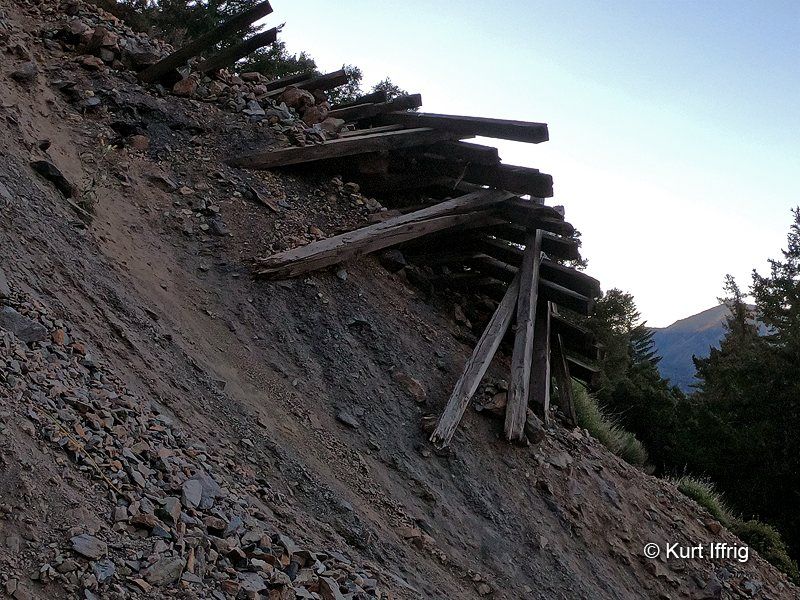
Now we come to the second attempt, about two weeks later, this time from the top down. This pile of timbers
can be seen from above and reminded me of one of the pirate traps in Swiss Family Robinson. There are only
thin metal straps holding this together, so you better not be under it when those straps break.
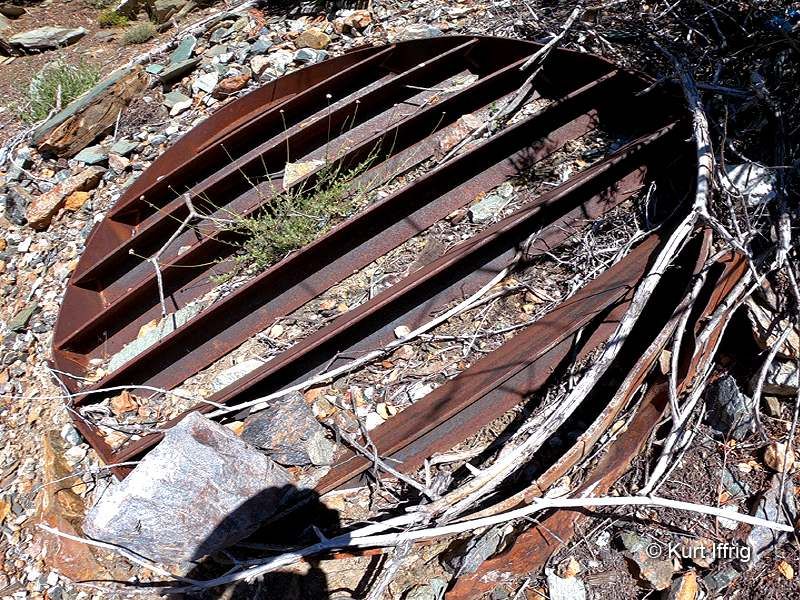
Here's the missing outer gating to Big Horn Mine's lower portal. Somebody tore this clean out of the cement
and rolled it over the hillside.
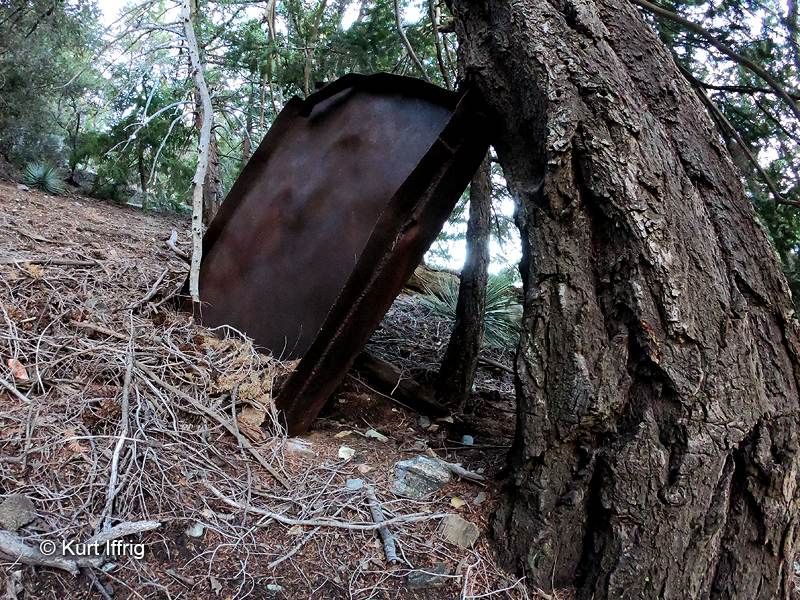
More unidentified heavy equipment found in the forest.
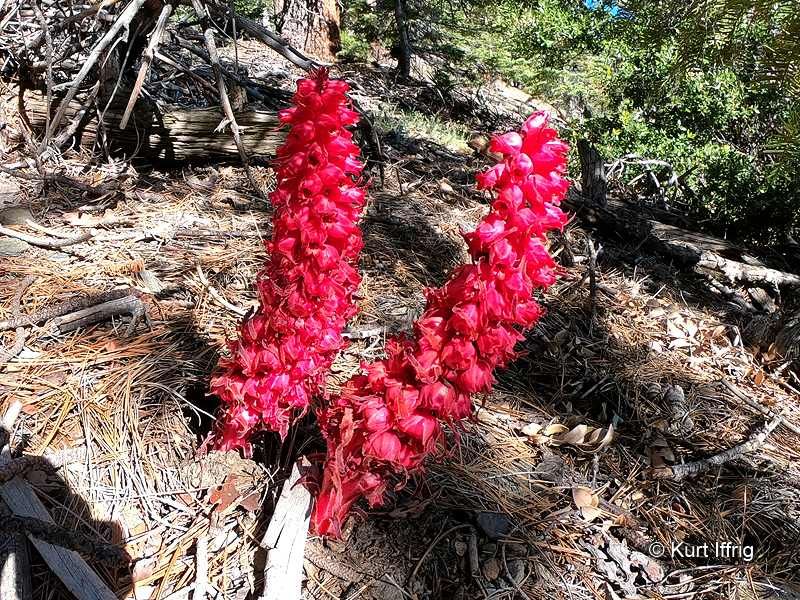
Rarely seen Snow Flowers. These are actually edible and can be cooked like asparagus.
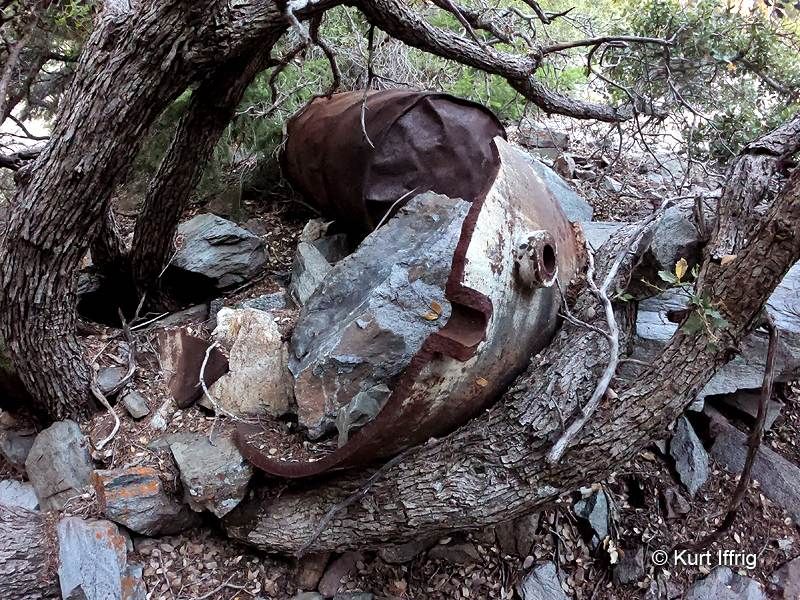
In the background is an old barrel. In front is a broken boiler, similar to the one I found near the bottom of the canyon.
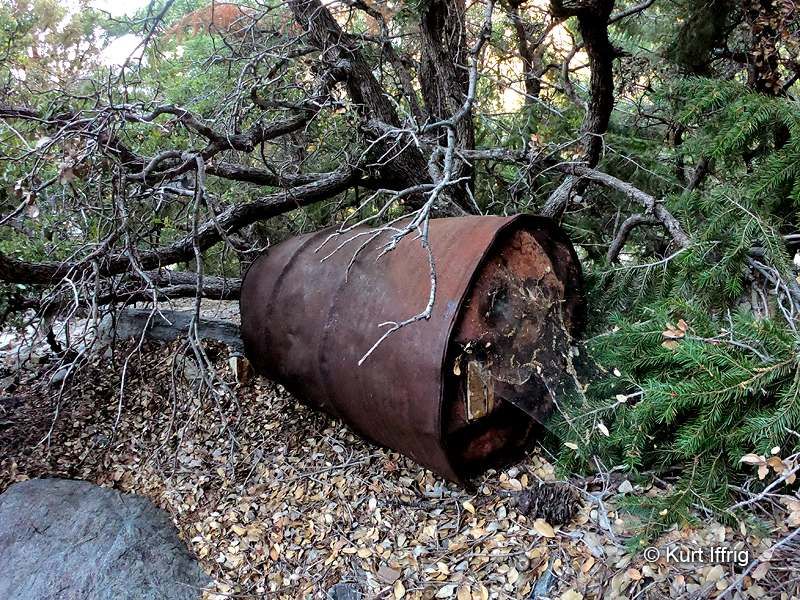
Just another random barrel.

Whoever was driving the truck was doing some radical offroading.
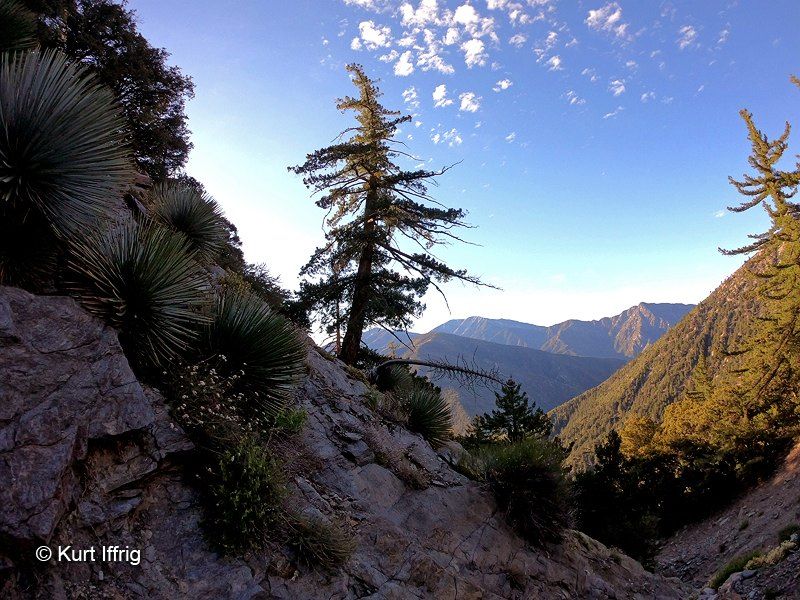
A nice morning view down the canyon. You can see Baldy, West Baldy and Iron Mountain in the distance.
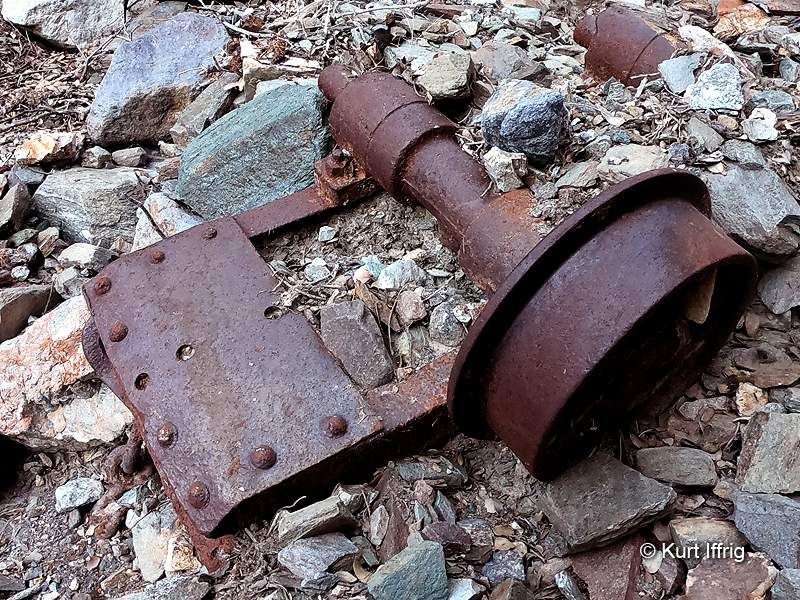
Yet another ore cart. The box and two wheels were missing from this one.
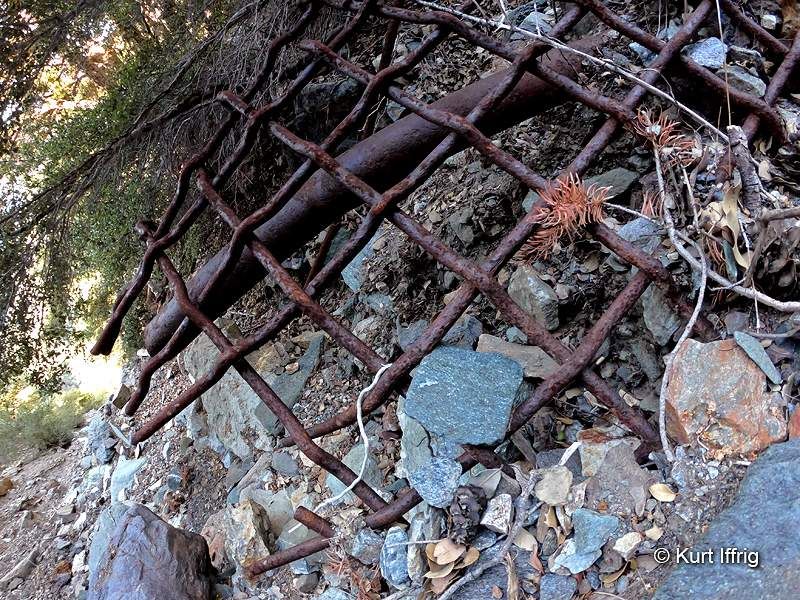
Not quite sure what this was. It might have been part of a grizzly, used in ore chutes to let smaller rocks through.
while keeping the larger ones out.
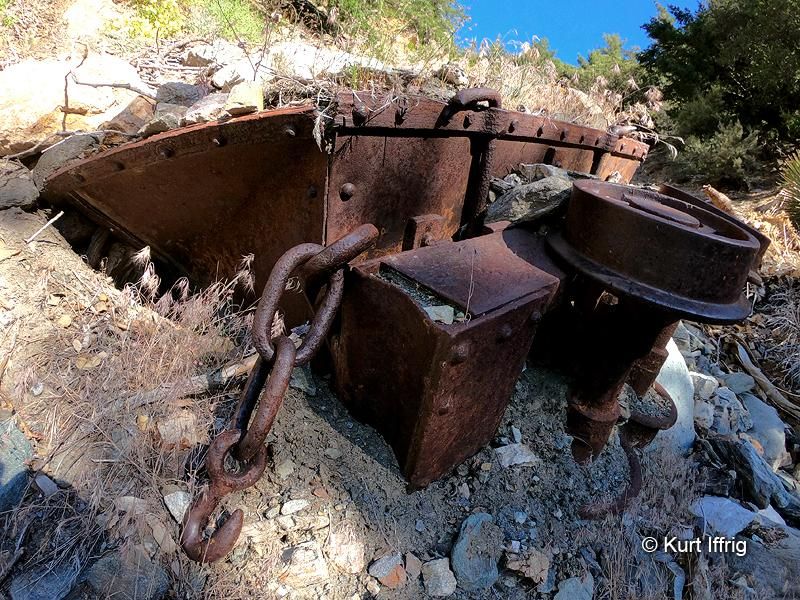
This was the most complete ore cart that I found. The chassis is still connected to the box, but at least one
side of the box is missing.
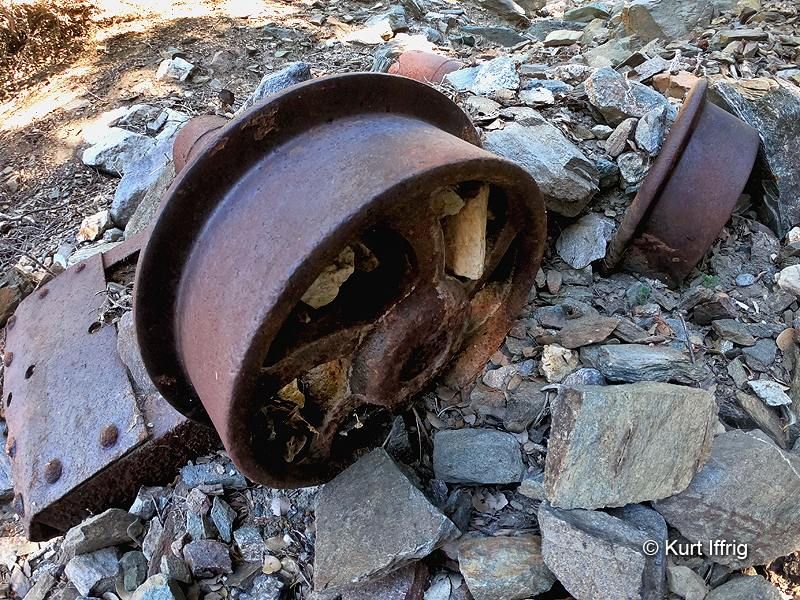
Another ore cart, chassis only, with two wheels missing.
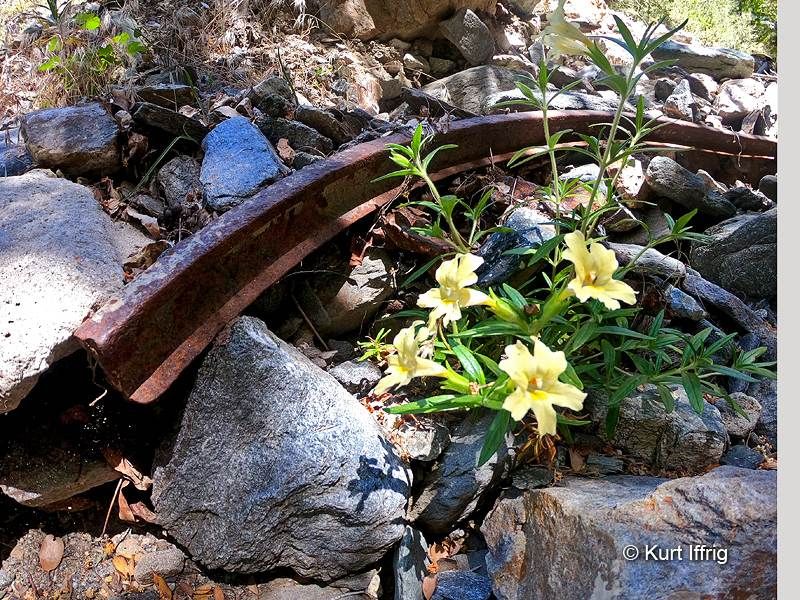
More rails. The power of flood water has bent this one with ease.
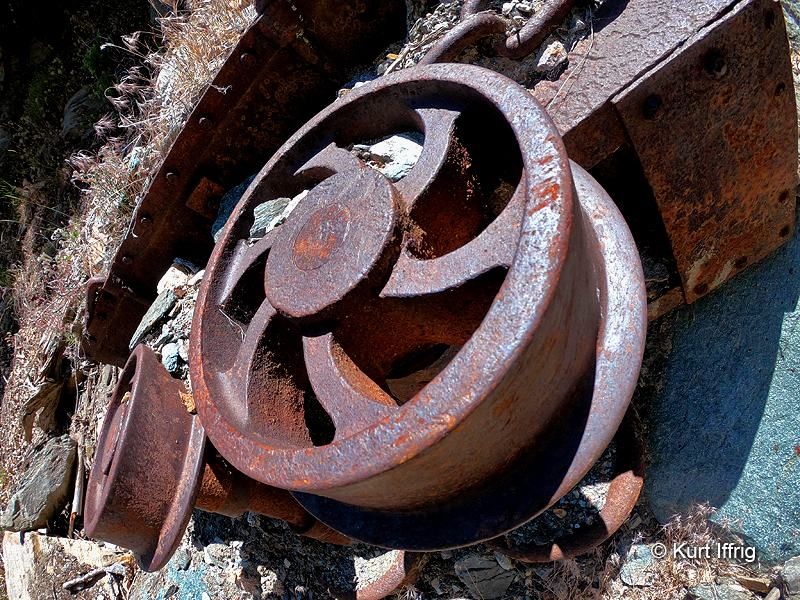
Closeup of ore cart wheels.
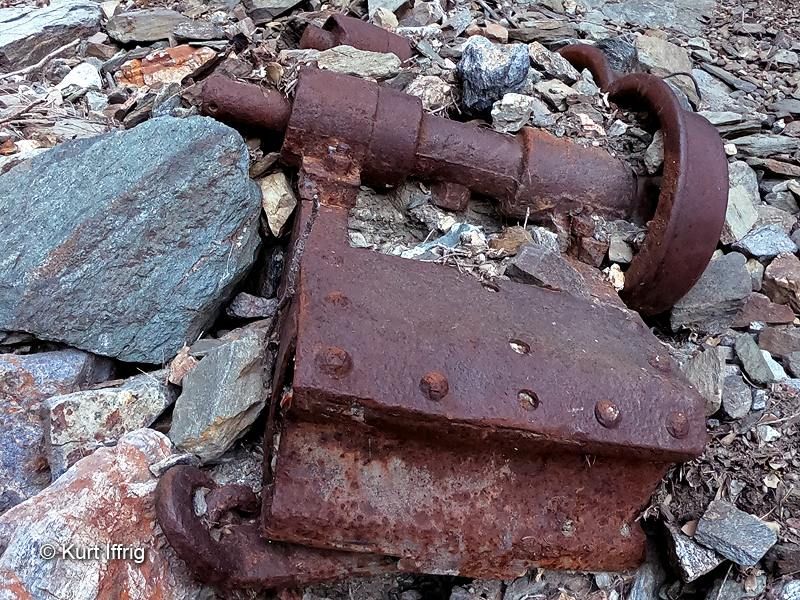
Another shot of a partial ore cart, two wheels gone.
Before you go climbing down in this canyon, know that it's dangerous, and there are several dropoffs along
the way. Also no water to speak of, so stock up. It would be interesting to find out if there is a mine nearby
the cabin ruins seen on this page. I'm almost sure there is.
it would be easier to come from the bottom up. That's a long walk, starting in Vincent Gulch, going all the way to
the end of Mine Gulch and then cutting up a massive rock wash, looking for the entrance to the right canyon. I was
searching for a mine (that I never found) but there were artifacts galore from up above.

An early morning view of Baden Powell from Inspiration Point. This used to be known as North Baldy.

Beautiful manzanita on the way down. People used to make furniture out of this, but now it's protected.

Along the way I passed this old plane wreck. This was a glider that crash landed in 1974. Both passengers survived.

Idiots have scratched their names all over the plane, including a dumbass from the Forest Service, who should be fired.
On the way back out happened to meet up with Anthony and his girlfriend in Mine Gulch and showed them the wreck.

Here's the cutoff for Prairie Fork, but I was going in the opposite direction on this day. Originally Prairie Fork
was supposed to be turned into a dam, but fortunately the San Gabriel Mining company fought the water
company and won. George Trogden was an agent who worked for the water company and lived near Iron Fork.

It was midsummer and hot, but there was still a good flow of water in some areas.

Cutting up the big rock wash. Way back there you can see Mt. Baden Powell.

After locating the mouth of the canyon I dug this artifact out of some brush. Not sure what it was.

This was my most massive find. Looks like an old boiler that got suspended above some rocks on the way down.

Near the boiler I found remnants of an old wood cabin perched on a plateau. The boards were all over the place.
I believe that there may be a mine in the side gully here, but I didn't have time to look for it on that day.

Not sure what this was. It may be a part broken off the base of the Big Horn's original two stamp mill.
I found one of the stamp heads further up the canyon. The mine eventually upgraded to a ten stamp mill
and were thinking of adding a 60 stamp mill to that, but the company was mismanaged and that plan
fell through.

Now we get to the nitty gritty and start finding the ore carts. Apparently the mining company just shoved
these over the edge after mining operations ceased.

And of course there were rails everywhere. I'm amazed that they didn't salvage these for money.

A nice pure vein of quartz. The entire vein was about 2 feet high by ten feet long and went straight into the hillside.

Not sure what this was. Paul Bunyan's toothpick maybe.

Chassis of a second ore cart. These were made in two pieces, and you can see the eight holes where the
chassis was bolted to the box.

Box portion of a third ore cart. On this one you can see the release lever near the bottom of the photo.

There was no water in this canyon, but a lot of wildflowers. Here you see some Sticky Monkeyflower and Indian Paintbrush.

Heavy timbers galore down in this canyon. Some were as long as 20 feet.

This was my big find of the day. It's one of the original stamp heads from the mill. This weighs about 900
pounds, and if it came from the second mill built there would have been 10 of these. You can see how the
concave side has been worn down by use.

Another cart. This one has a complete chassis but the box has been ripped off. A beautiful piece.

When I got to this point I wasn't sure where to go. I climbed up the left side, but then something terrible happened.
The Ridgecrest earthquake struck, and rocks started falling all over the place. That was enough for me, I abandoned ship
and headed back down the canyon. I was almost out of water anyways, so it was time to go.

Now we come to the second attempt, about two weeks later, this time from the top down. This pile of timbers
can be seen from above and reminded me of one of the pirate traps in Swiss Family Robinson. There are only
thin metal straps holding this together, so you better not be under it when those straps break.

Here's the missing outer gating to Big Horn Mine's lower portal. Somebody tore this clean out of the cement
and rolled it over the hillside.

More unidentified heavy equipment found in the forest.

Rarely seen Snow Flowers. These are actually edible and can be cooked like asparagus.

In the background is an old barrel. In front is a broken boiler, similar to the one I found near the bottom of the canyon.

Just another random barrel.

Whoever was driving the truck was doing some radical offroading.

A nice morning view down the canyon. You can see Baldy, West Baldy and Iron Mountain in the distance.

Yet another ore cart. The box and two wheels were missing from this one.

Not quite sure what this was. It might have been part of a grizzly, used in ore chutes to let smaller rocks through.
while keeping the larger ones out.

This was the most complete ore cart that I found. The chassis is still connected to the box, but at least one
side of the box is missing.

Another ore cart, chassis only, with two wheels missing.

More rails. The power of flood water has bent this one with ease.

Closeup of ore cart wheels.

Another shot of a partial ore cart, two wheels gone.
Before you go climbing down in this canyon, know that it's dangerous, and there are several dropoffs along
the way. Also no water to speak of, so stock up. It would be interesting to find out if there is a mine nearby
the cabin ruins seen on this page. I'm almost sure there is.
